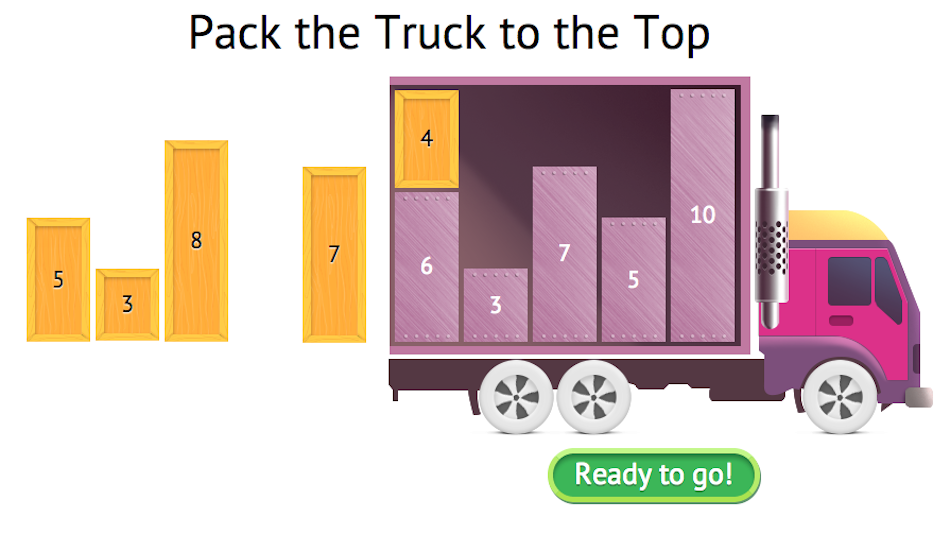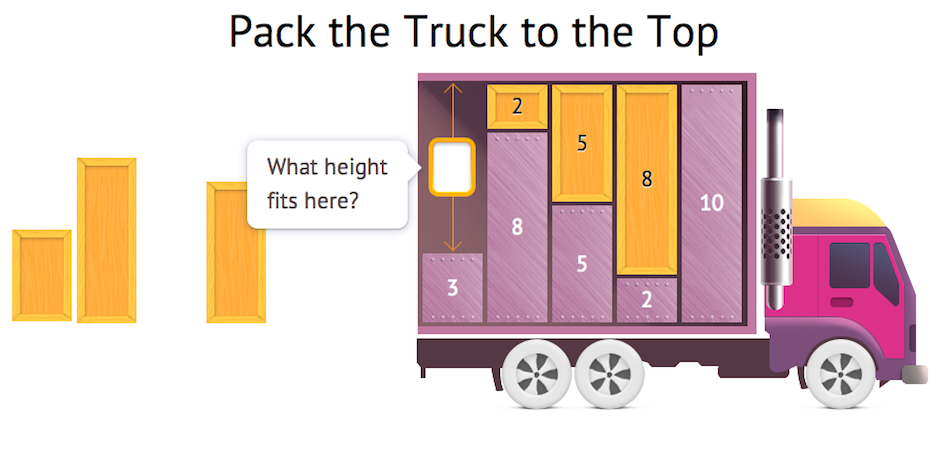Going from Concrete to Visual Representation: Combinations to 10
This is a guest post from our friend Jen, a third grade teacher from Wisconsin, USA and math blogger behind Beyond Traditional Math blog. If you are interested in contributing to the Happy Numbers Blog, please see our guidelines here.
Every year when I start things rolling in my third grade classroom, I am amazed at the levels of abilities of my students. There are always a handful of students who, for whatever reason, are lacking number sense in big ways. This handful of students typically struggles with making combinations to 10. So I do what any teacher would do best, I re-teach, and re-teach, and re-teach.
I always start with a concrete approach first. For example, we build numbers to 10 using snap cubes. This is an awesome way to touch, work with, and see the numbers. To help them see the connection between addition and subtraction we play a game called Snap. I tell them I have 10 cubes behind my back, and then snap off a set to hold in front of me like this:

I ask the student to tell me how many cubes are behind my back. That is when the student, if they know their combinations to 10, will say that I have 6 cubes behind my back.
We can go around and around with this game, but eventually students need to move from the concrete to the representational approach to math. That means I want to be able to show my students a picture and have them do the same exact thing.
This is where I need to tell you about Happy Numbers. Perhaps you should stop reading, go to their website, sign up for a free trial… and then come back to this post. That is how great it is! I am not being paid to tell you this, I am telling you this because I am a HUGE fan of visual representation for young learners, and especially those students who struggle.
After playing around a bit, I tried out the game Pack the Truck because I wanted to find a resource that would be able to bridge the concrete and abstract stage of their learning.
AWESOME. Just awesome!
First, students are making combinations to 10 with the numbers there on the boxes and the truck:

Then, after a few turns, the number on the boxes disappear to help the students think about what goes together, like this:

Again, this is amazing for many reasons:
1. Learning combinations to 10 is extremely important for more complex math later on, specifically multiplication and division.
2. This game helps students estimate visually, a skill that takes a ton of practice to master.
3. The graphics really are crisp and clean, making it easy for students to know what to do!
4. This is a nice connection between the concrete (hands on – doing stage) and representational (models and pictures – seeing stage). I believe this will then lead very well into the abstract (numbers and symbols – symbolic stage).
There are a plethora of games on this site for students to try out. They are heavy on the visual side of things, and they definitely help students connect the concept to the abstract symbols and numbers that we as adults are expected to do.
Hands down one of the coolest sites I’ve had the pleasure of trying out!

Jen is a third grade teacher with eight years of experience teaching elementary students. Her passion is teaching math with a focus on conceptual knowledge through real world projects and rigorous problem solving. You can find more teaching tips and resources (and hear about how much she has learned from her mistakes) at her blog: Beyond Traditional Math. You can also connect with her on Pinterest, Twitter, and Facebook.
